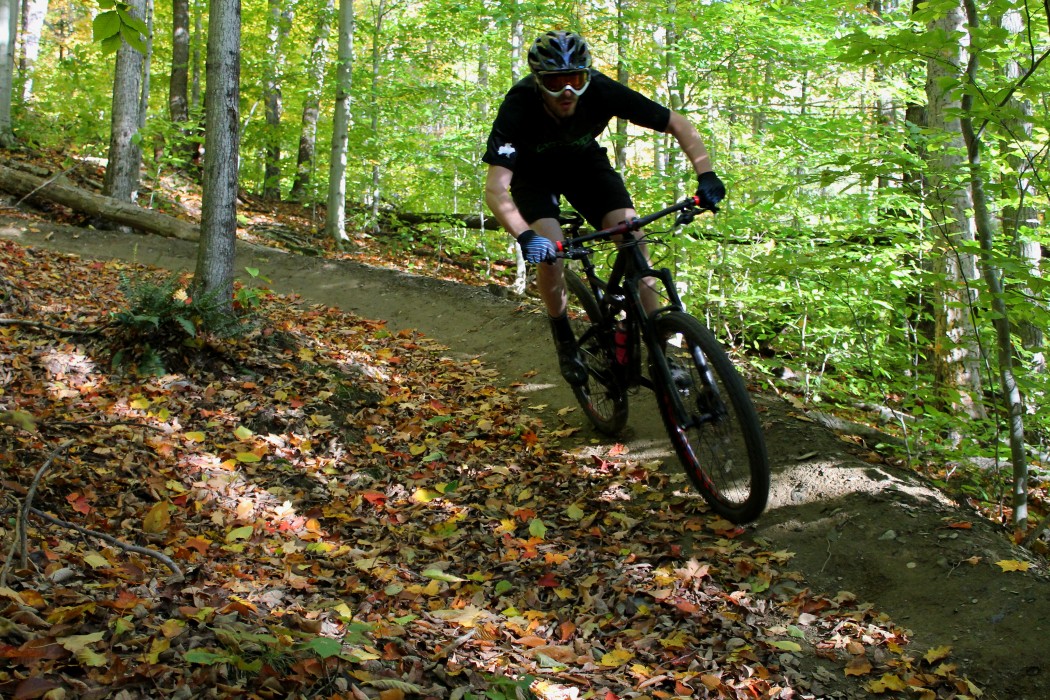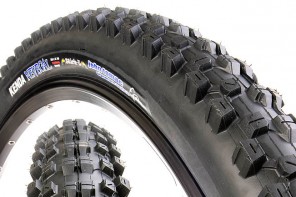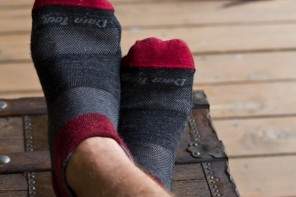By Jonathon Weber
Few bikes have sparked as much fiery internet debate and bike shop speculation as the new breed of long-travel 29ers. Aimed squarely at the all-mountain/enduro market, these bikes attempt to pair the pedaling efficiency and rollover of big wheels with the descending abilities of slack, long-travel all-mountain rigs. Specialized’s Enduro 29 earned some immediate attention after decimating the smaller-wheeled competition under Aaron Gwin at Sea Otter earlier this year, and then again more recently when Mitch Ropelato piloted it to the second-fastest time in the qualifying rounds at World Champs in Pietermaritzburg.
When the Enduro 29 first showed up at my shop, I was psyched to hop on and pedal around. I’m 6’1, so the medium frame was for sure a bit tight, but felt surprisingly snappy and fun. A few weeks after that, we received a large Enduro Comp 29 as a demo bike, which I have been lucky enough to ride at various Vermont spots – Saxon Hill, Mobbs Valley, Perry Hill, Norwich, and Kingdom trails, to name a few. I also got a taste of the big bike’s racing capabilities during the Kingdom Enduro, and clocked some bike park time at both Highland and Burke.
Features
– 155mm rear wheel travel, 160mm up front.
– Blacked-out, flawlessly smooth Rockshox Pike up front.
– Fairly aggressive tire spec: Specialized Butcher DH in front, Purgatory rear.
– Short 419mm chainstays.
Verdict
Climbing
Most of my rides on the Enduro 29 began with climbs, and every time I clipped in for an ascent I was reminded that this bike’s most impressive quality is a bit of a sleeper: it is an incredible climber – dare I say that it’s the best-climbing 160mm bike out there? Absolutely. Have I ridden all the 160mm bikes out there? Absolutely not.
Still, it’s quick compared to most bikes in its class. Per usual, I found little reason to flip the Fox Float shock’s CTD lever into “climb” mode, unless I was on a fire road or was riding to the trail head. Specialized’s FSR suspension continues to impress, and the newly redesigned Enduro frame is noticeably improved in terms of pedaling efficiency. In fact, it often feels
like the new Enduro’s climbing abilities are comparable to the Stumpjumer’s.
There is a bit of a learning curve associated with climbing on a bike like the Enduro 29 – it almost feels as if the characteristics of 29 inch wheels are amplified by the bike’s long and slack attitude, meaning that the best way up is also usually the straightest way up. Find something to focus on 10-15 feet up the trail and then just lay down the power, letting the bike work through whatever obstacles are in its way. Threading-the-needle approaches to climbing are not effective on this bike, as at lower speeds the Enduro does tend to wallow a bit – though not much more than any other bike with 160mm of travel.
Descending
In many respects, this is a bike that will tell you how to ride. You might hop aboard after looking at its geometry and spec and try to push it around like a nimble play bike. What it will do is tell you to get off the brakes, quit the monkey business, and go faster – in as straight a line as possible. Sure, you can still play around, but you probably won’t after you realize how fast you can go if you just point and shoot. Some 29ers feel like they’re too big for the trail. The Enduro 29 is so massively capable that it makes the trail feel too small.
Again, I’m not saying that the bike isn’t playful – it is, for a 29er, and this is aided by the short chainstays that Specialized achieved by reinventing the way that the front derailleur mounts to the bike. Predictably, getting off the brakes and letting the big wheels’ massive contact patch eat everything up will open up a world of traction and confidence that a smaller bike can’t unlock. I was also surprised by how balanced and calm the bike felt when airborne. As on many other 29ers, the key to jumping is leaving the lip in a balanced position – don’t rely on airtime to correct the bike’s orientation before you land, because it can be pretty difficult to get the Enduro 29 to point straight once it’s gone sideways.
My only qualm with the Enduro 29 might be a problem with all 29ers, but it’s an important issue to discuss when the bike in question is built to compete in a discipline currently dominated by smaller-wheeled machines. Stage two of the Burke Enduro was pretty windy, pedally singletrack – just the thing, I thought, for the big-wheeled machine of darkness. But what I discovered was that every time I hit a corner, I would have to jam on the brakes in order to get the bike around, then would have to work hard getting the big wheels turning again, only to get back on the brakes for the next corner. Again, this is more of a wheel size issue, and the Enduro does seem to make the most of the frame design limitations associated with 29 inch wheels.
Overall, I would highly recommend the Enduro 29 if you’re focusing on enduro racing or if you like to let the bike drive. If you like smaller wheels for their playfulness, don’t expect this bike to have the attitude of a 26. As far as 29ers go, it’s a fun bike – but it still feels like a 29er; and in many respects that’s a good thing.
Rating
– Overall 8.5/10
– Innovation 2/2
– Function 2/2
– Aesthetics 2/2
– Features 1/2
– Quality / Price 1.5/2
Pros
– One of the best-handling 29ers I’ve ridden.
– Very stiff, efficient climber.
– Rockshox Pike is excellent, comes stock.
Cons
– Dropper post not included.
– The stock Formula brakes seemed to have mediocre power, and developed quite a howl.
Specs
– MSRP: $3500
– Colors: Gloss Black/Cyan, Matte Black/Gloss Black (tested)
– Sizes: S/M/L (tested)
– Weight:31.25








Chainstay length is wrong; it should be 430mm. 419mm is on the Enduro 26er.